Late Stages of Evolution and Evolution in Close Binary Systems#
Monday, Jan. 27, 2025
astrophysics of stars and planets - spring 2025 - university of arizona, steward observatory
Today’s Agenda#
Announcements / Recap (2m)
Dicuss Readings/ICA 3 (5m)
Reading Overview/Key Points (10m)
In-Class MESA Assignment (Groups of 2) (25m)
Debrief on ICA (5m)
Late Stages of Evolution#
Lower Mass Stars (\(0.8M_{\odot}-3M_{\odot}\))#
Starting with the lower main-sequence stars we can look at a collection of isochrones or, theoretical stellar models of stars of varying mass but similar composition at fixed points in time. Isochrones are great for studying stellar populations such as those in globular clusters.
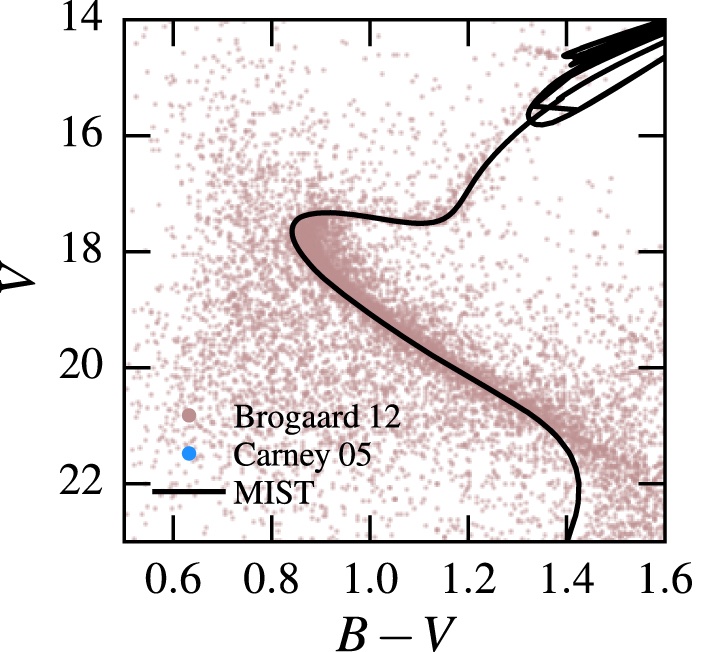
Isochrones are powerful tools for estimating the age of a cluster! Doing so requires identification of the main-sequence turnoff (TO) time. It is also assumed that all the stars were born at roughly the same time.
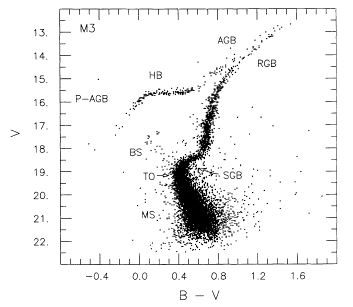
In the above image, we show a color-magnitude diagram for the globular cluster M3. Key observational epochs are identified and label:
Main Sequence (MS) core-hydrogen burning phase
Turnoff Point (TO): The time at which the star departs the MS.
Sub-Giant Branch (SGB):shell-burning hydrogen phase from TO to the Hayashi line
Blue Stragglers (BS): stars hotter and more blue than expected, emulating a younger population possibly from a merger
Red Giant Branch (RGB): shell-burning hydrogen phase along the Hayashi line until helium ignition
Horizontal Branch (HB): core helium burning phase
Asymptotic Giant Branch (AGB): shell hydrogen and shell helium burning phase
Post-AGB Branch (P-AGB): final evolution from AGB to WD phase
Intermediate-Mass Stars (\(3M_{\odot}-9M_{\odot}\))#
In the below theoretical HR diagram we can follow the post-main sequence evolution of a \(5M_{\odot}\) stellar model.
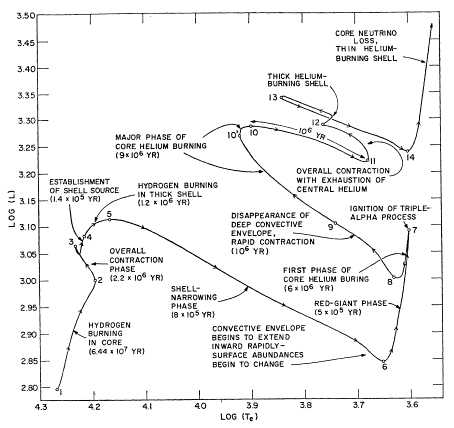
Massive Stars (\(\gt9M_{\odot}\))#
These stars have noticeably different characteristics:
They avoid the helium flash, they do not form degenerate CO cores after He-depletion, but they can experience significant mass loss induced by their luminosities. In massive blue stars, this is driven by radiation pressure on strong spectral lines.
Some definitions:
Wolf-Rayet (WR) Stars: characterized by strong emission lines that dominate the optical spectrum. These stars lie near the main sequence but their spectra indicate a strong deficiency or absence of hydrogen.
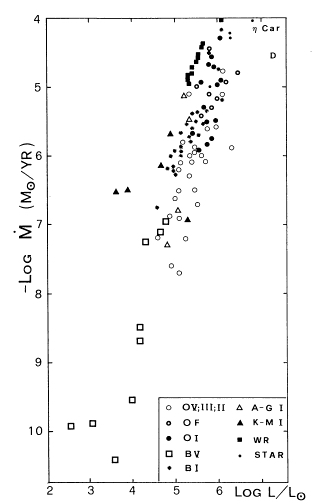
Figure showing stars with larger luminosity experience more violent mass loss.
Evolution in Close Binary Systems#
We define a close binary system as one containing two stars in which the evolution of either star is strongly influenced by the presence of the other.
Most stars are in binaries (or multiples) and of that, half are close binary systems.
Some Defitions:
\(a\) - semi-major axis of the system
\(q\) - mass ratio (\(M_{1}/M_{2}\)), where \(M_{1}\) is the primary (or “donor”) star.
Roche Lobe#
region around a star in a binary system within which orbiting material is gravitationally bound to that star. It is an approximately teardrop-shaped region bounded by a critical gravitational equipotential, with the apex of the teardrop pointing towards the other star (the apex is at the L1 Lagrangian (points of equilibrium for small-mass objects under the gravitational influence of two massive orbiting bodies) point of the system).
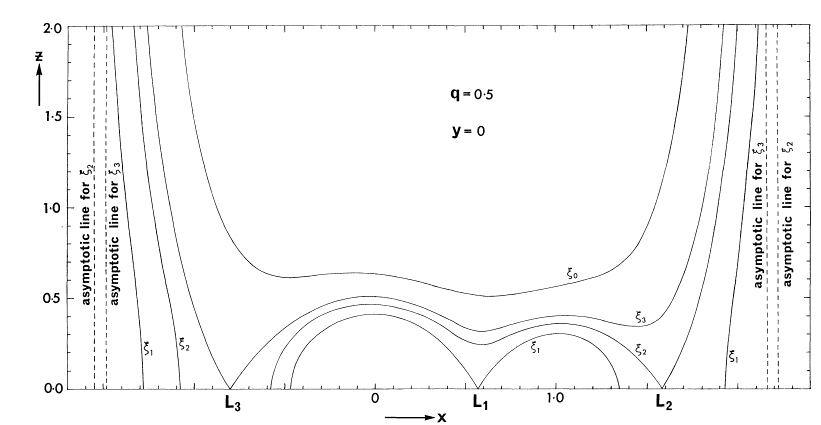
Mass Transfer#
When a star “exceeds its Roche lobe”, its surface extends out beyond its Roche lobe and the material which lies outside the Roche lobe can “fall off” into the other object’s Roche lobe via the first Lagrangian point. In binary evolution this is referred to as mass transfer via Roche-lobe overflow.
If mass transfer is large enough, an accretion disk will form about Star 2!
Example Binary Star System#
Detached Binary#
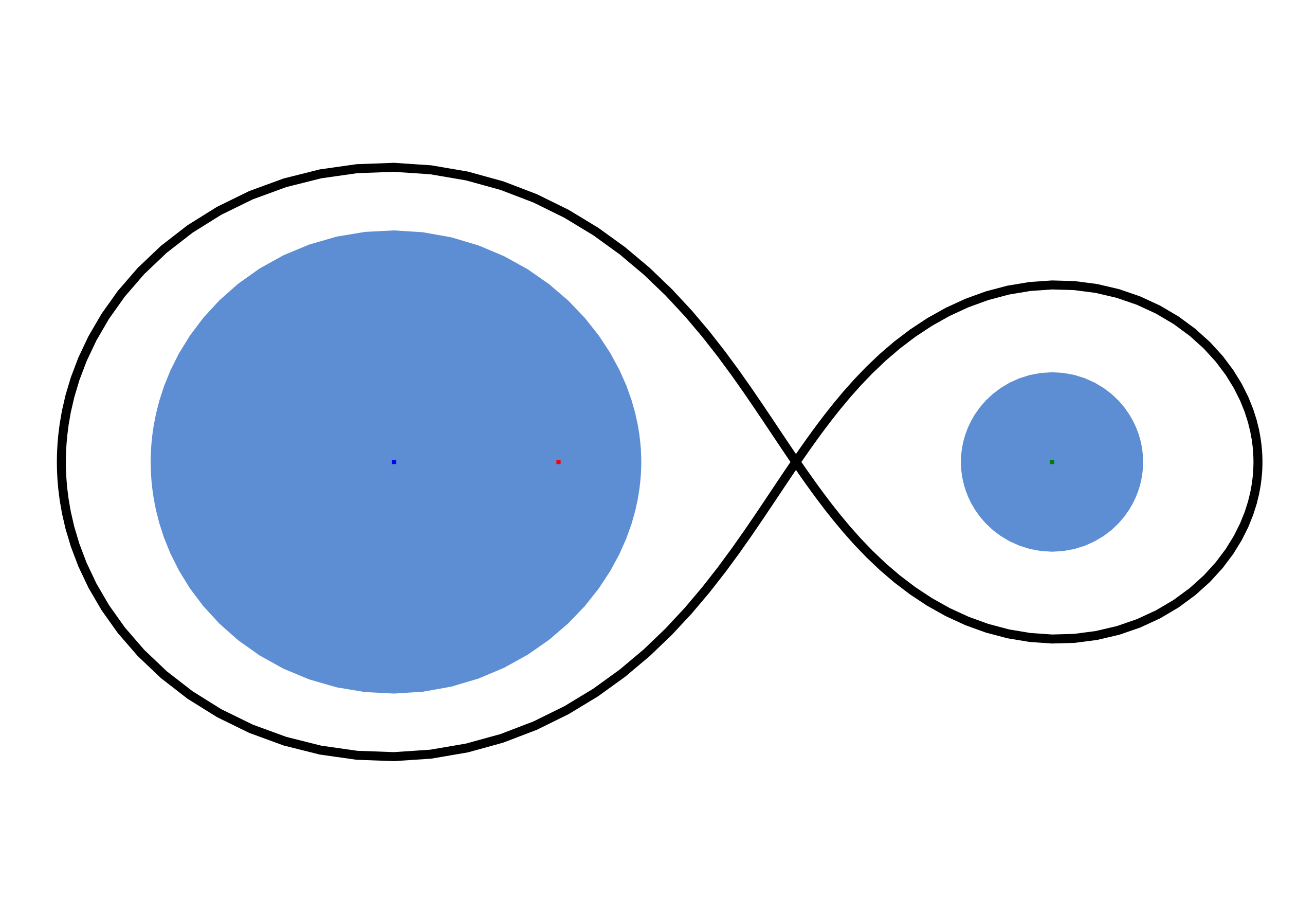
In a detached configuration neither star fills its Roche lobe. Most stars are this.
Semi-Detached Binary#
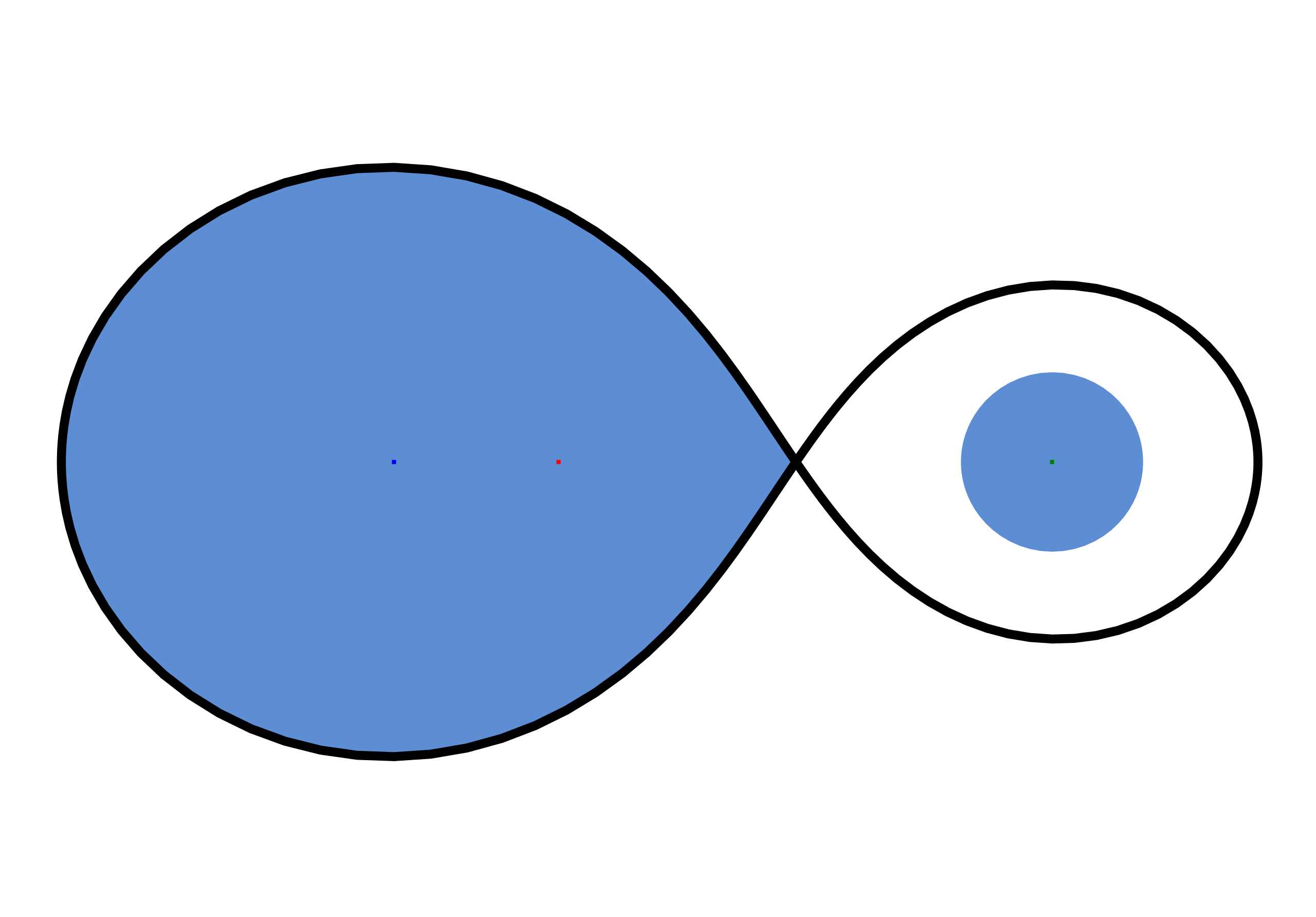
In a semidetached configuration one star fills its Roche lobe.
Contact Binary#

In a contact configuration both stars overfill their Roche lobes.
Credit: Philip D. Hall
In-Class Activity#
Head over to ICA4, work with the person next to you.


